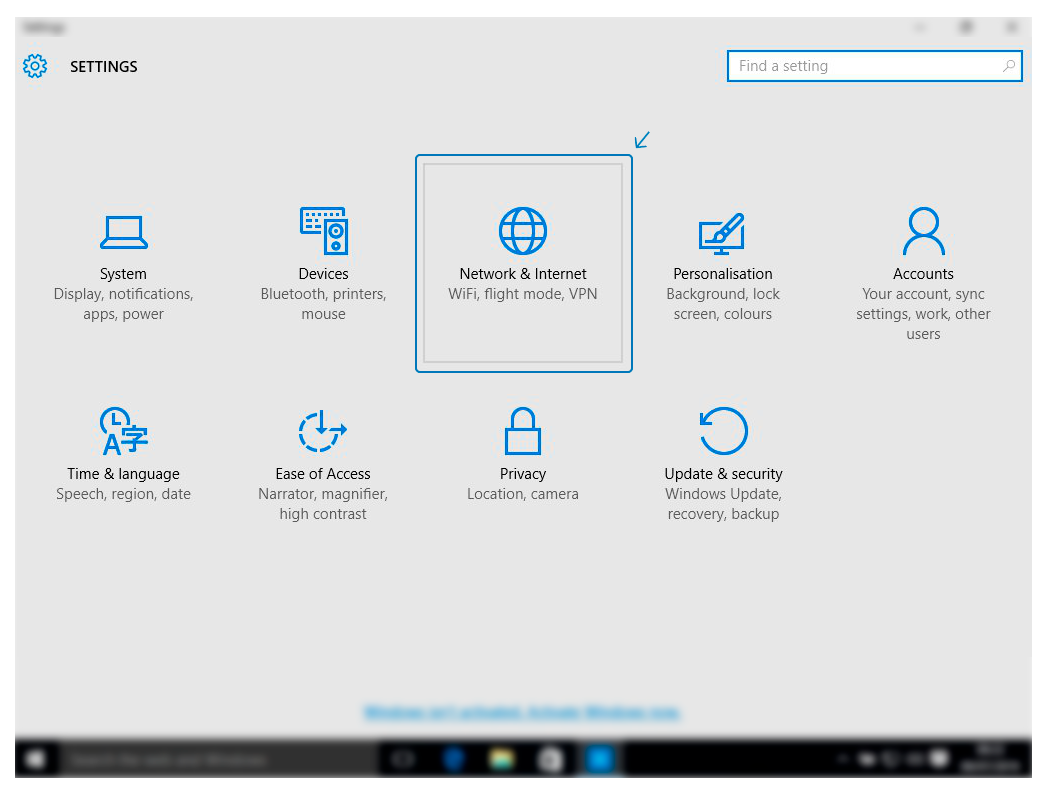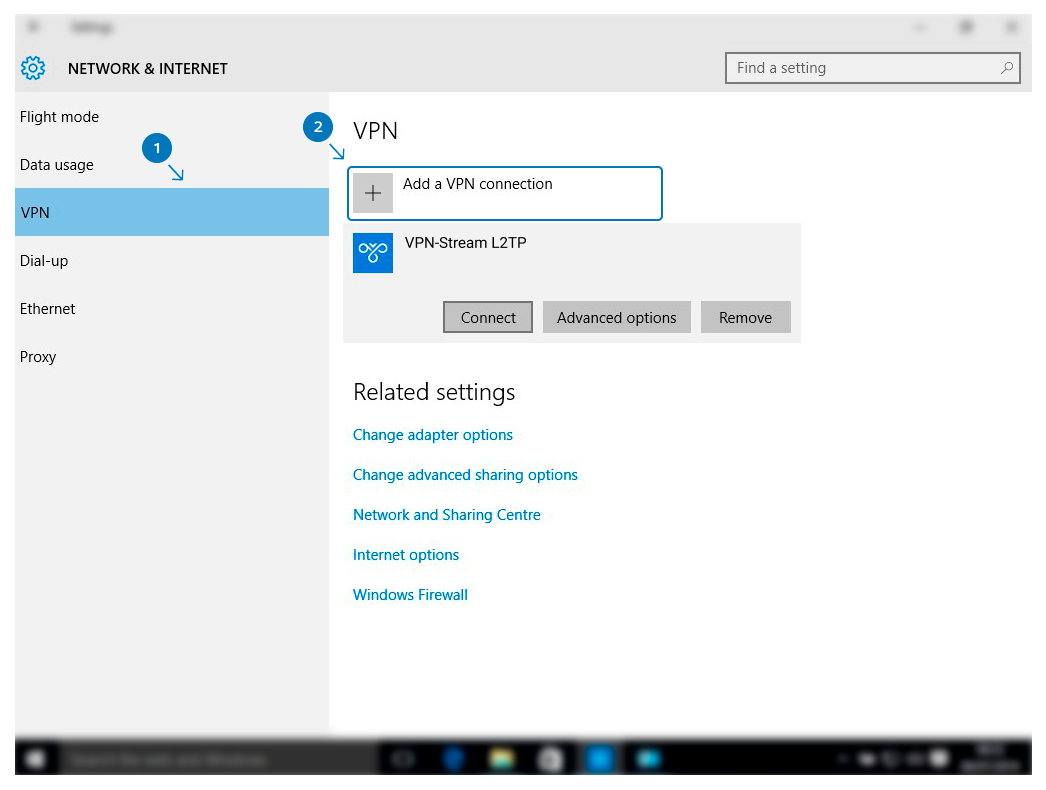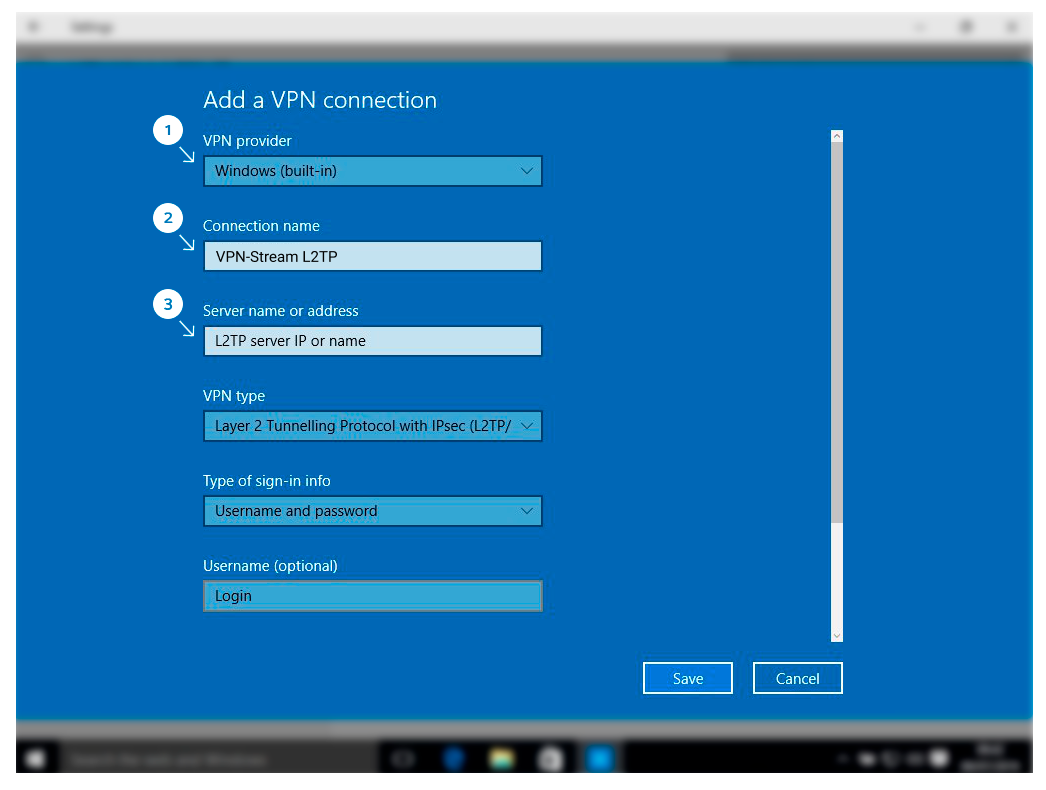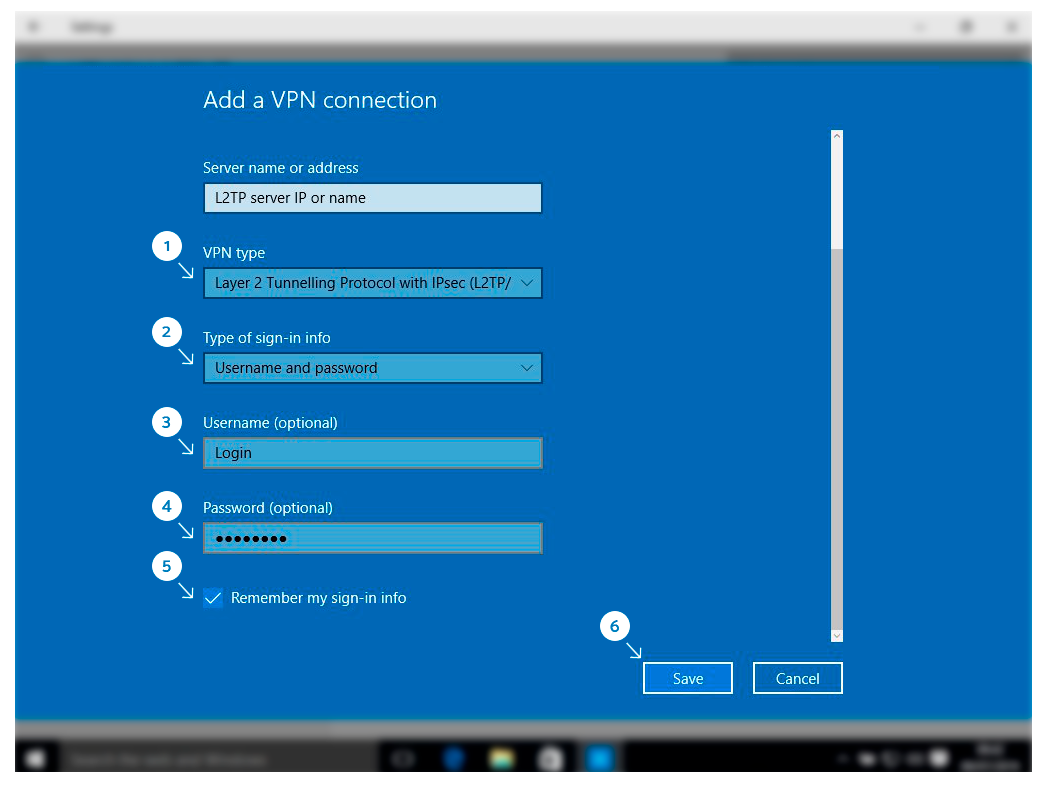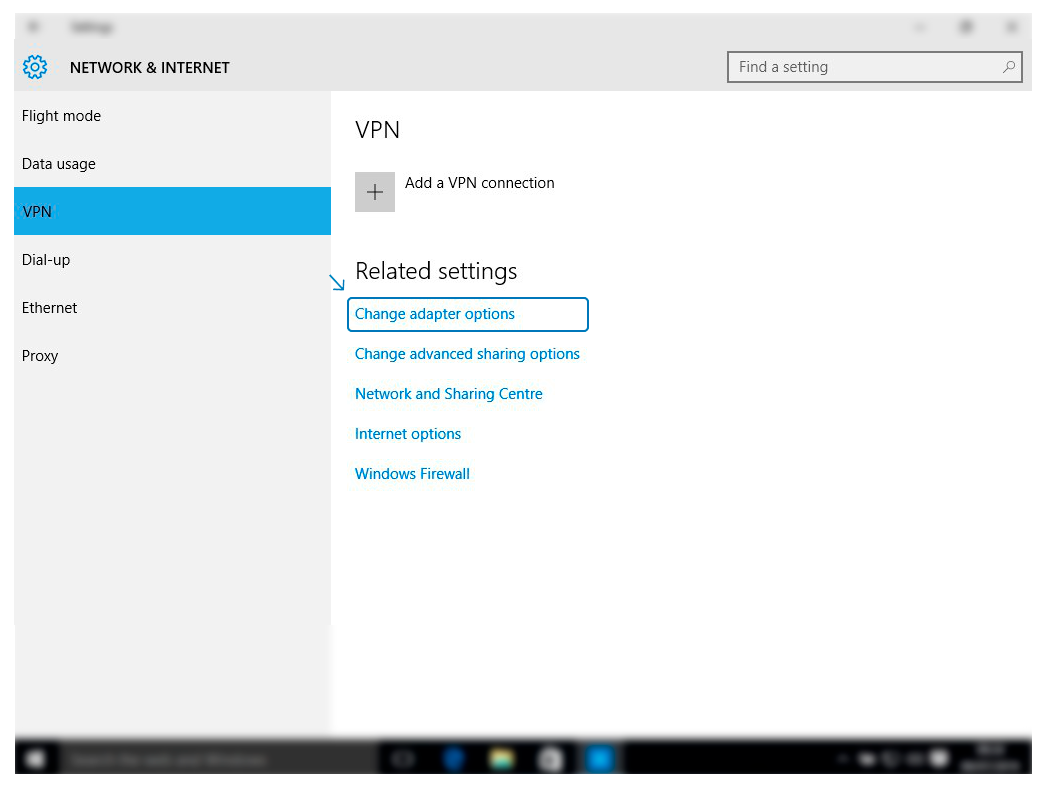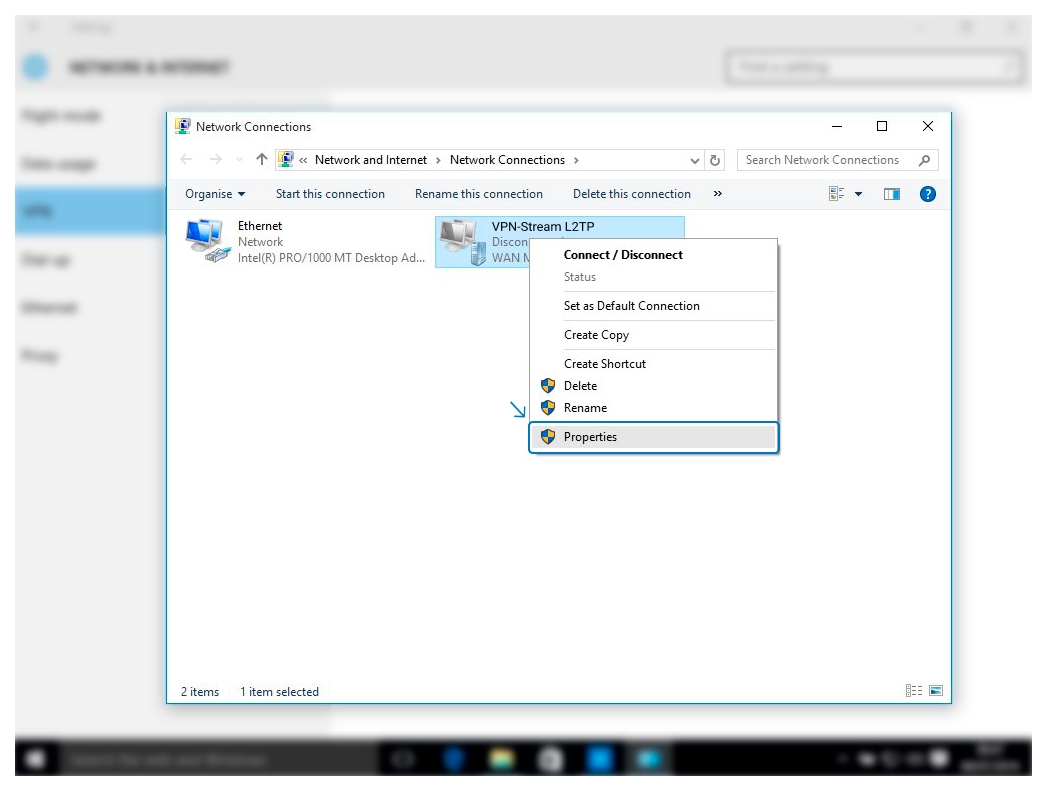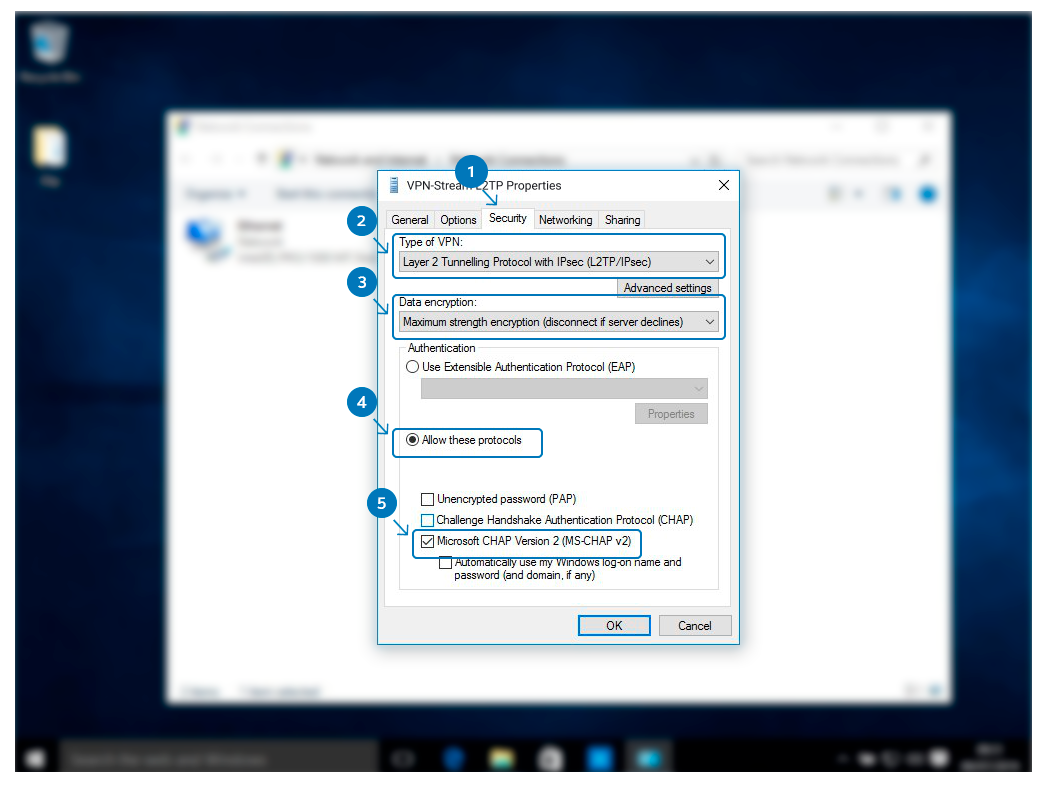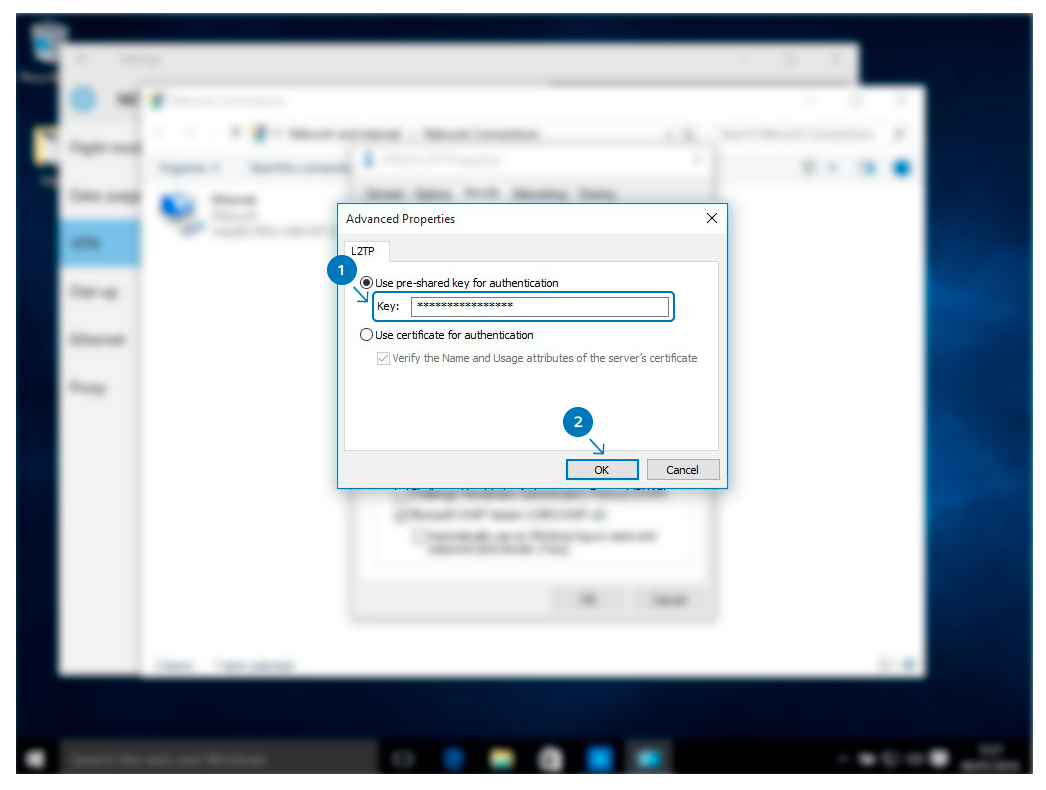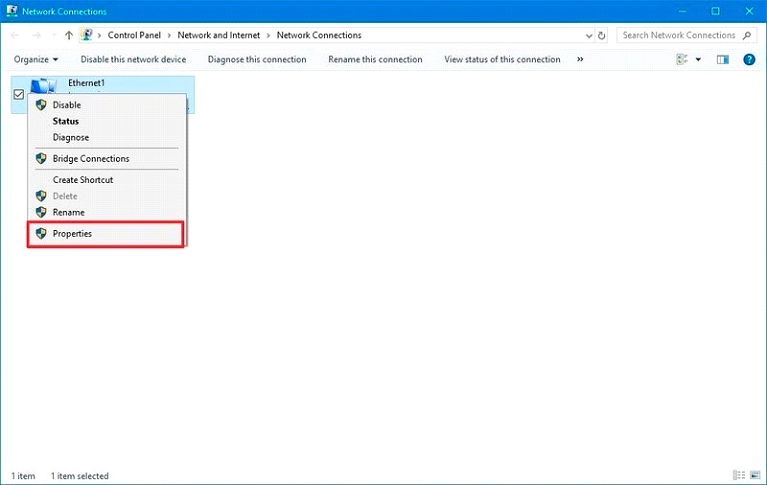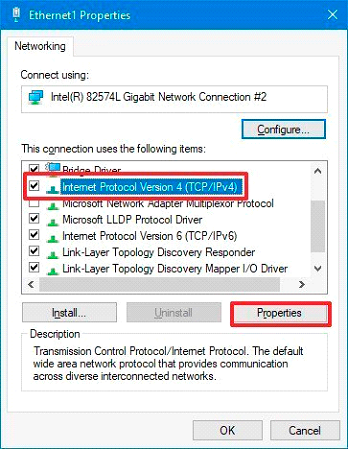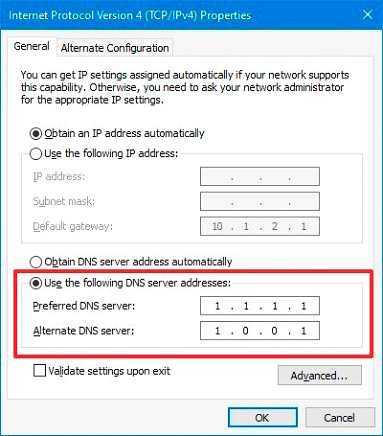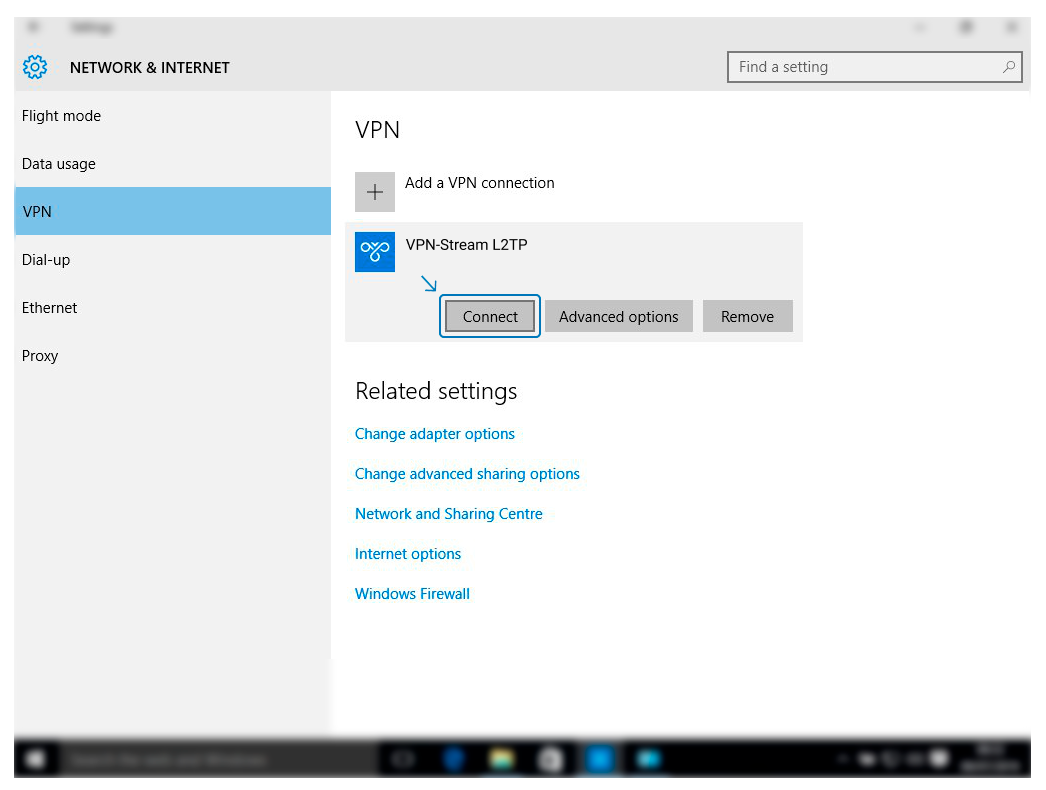1. Click on the Start men, and then select the Settings option.
2. Open Network & Internet.
3. Select VPN on the left. Now click on Add a VPN connection.
4. Set the VPN provider as Windows (built-in).
For Connection Name, you can enter VPN-Stream.com L2TP.
Specify the Domain within the Internet address field.
5. For VPN type, you can choose Layer 2 Tunneling Protocol with IPsec (l2TP/IPsec).
Under Type of Sign-In Info, choose Username and password.
Type in your VPN-Stream.com L2TP username and password in the matching fields.
Check Remember this password if you’d like to save the username and password for the future, otherwise leave it unchecked.
Click Save.
6. Click Change adapter options
7. Right-click on your VPN-Stream.com L2TP icon, and then select Properties.
8.Click the Security tab, here you can change the following settings:
Type of VPN: Layer 2 Tunneling Protocol with IPsec (L2TP/IPSec)
Data encryption: Maximum strength encryption (disconnect if server declines)
Allow these Protocols: Radio button selected
Microsoft CHAP Version 2 (MS-CHAP v2): Checked
9. Click Advanced Settings. Specify the Pre-shared key (PSK), and then click Ok
Now you need to change your DNS, here’s how you can do it:
1. Right-click the network interface connected to the internet, and then select the Properties option.
2. Select and check the Internet Protocol Version 4 (TCP/IPv4) option.
3. Click the Properties button.
4. Click on the Use the following DNS server addresses option.
5. Insert your preferred and alternate DNS addresses.
In case you are using Google Public DNS, OpenDNS, or CloudFlare, you can insert these settings:
- Google Public DNS: 8.8.8.8 and 8.8.4.4
-OpenDNS: 208.67.222.222 and 208.67.220.220
-Cloudflare: 1.1.1.1 and 1.0.0.1
6. Click the OK button.
7. Click the Close button.
Click on the VPN-Stream.com L2TP icon, and then click Connect

